Blog
July 29th, 2009
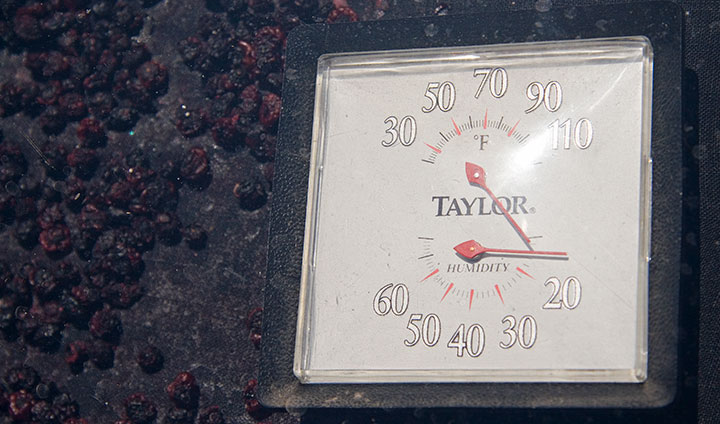
They’re predicting 105 degrees today here in T-town—that’s an all-time, record-breaking high. Now, if you’re in the Midwest, the South, or the Southwest and you’re reading this, you’re probably thinking, “And this is news how?” Well, this is where the part about “all-time” comes in—since white settlement of this area, at least, it has never, ever been this hot before. This place ain’t made for 105°. Almost nobody has air conditioning, but the discomfort is only the half of it. Who knows what this will mean for the snow pack in the mountains, or the water supply?
Beastly or not, though, it seemed a shame to let all this amazing solar energy go to waste. So over the weekend the Tailor devised a passive food dehydrator out of old window panes (buying an electric dryer, to us, seemed to defeat the purpose of home sustainability). Our first attempt at drying berries seemed successful, so at 5:30 this morning,before the heat kicked in, we headed to the Blueberry Park to pick about three gallons more. (The berries are happy with the heat, even if nobody else is!)

Here’s how it works: four nylon window screens (don’t use aluminum! It reacts with the food) hover over the pavement, propped up on wooden beams to allow for air circulation. Tied to each screen is a black linen cloth to absorb more heat and provide a clean surface for the food, while still letting air pass through. The glass windows fit right on top, providing the perfect space to trap hot air, just like a greenhouse.
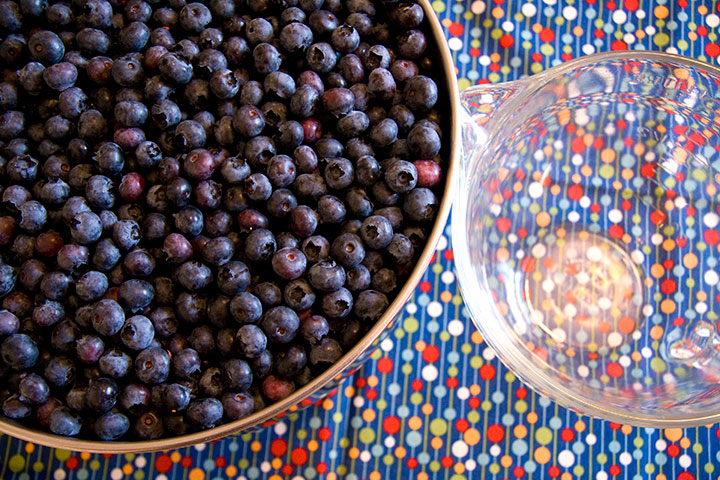
Now, on to the fruit itself. For blueberries, at least, the dried yield ends up being about a quarter of what you started with (so for example, two quarts of fresh berries will become about a pint dried), so it’s best to start with a big batch—another vote for a large, homemade drier over those tiny electric ones. Our drying system will hold five or six quarts of fresh berries.
Wash the berries and remove any stems, petals, grass and unripened fruit (and especially spiders!), and set a large stockpot of water to boil. Place about a quart of berries into a steamer —the berries will dry faster if you split the skins first, and smaller batches seem to be more effective than boiling the whole batch at once.

Once your water is boiling, put the steamer into the pot, and boil for thirty seconds—just long enough for the skins to split. Then remove the steamer and dump the hot berries into a colander in a cold sink (the ice water stops the cooking process).
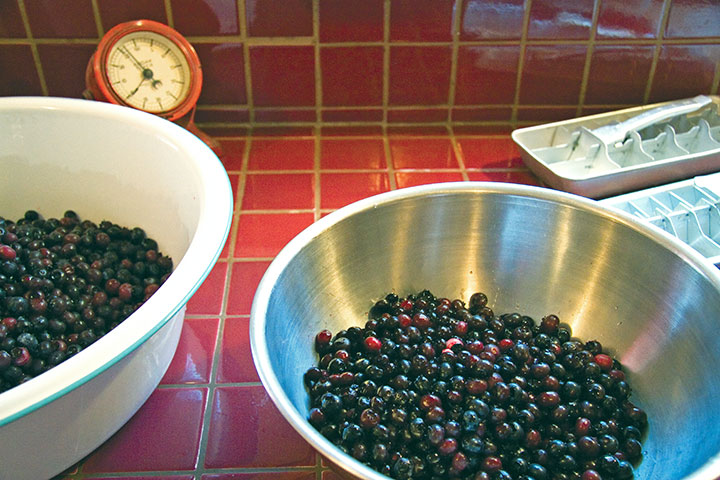
Here’s what the split berries look like; they should feel squishy, and you should be able to see the pale interior flesh on some of them. (Sorry about the photo quality—that red tile just kills the light.)
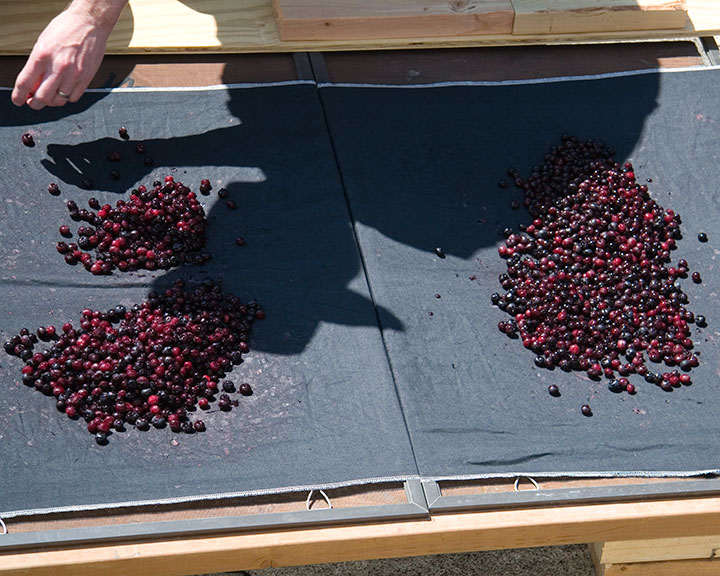
Okay, now you’re ready to take ’em outside. Distribute the berries evenly over the cloth-covered screens,

and spread them out until you have a single layer.

Now, just put the glass back into place, and let the sun do the work. It’s amazing how quickly the humidity inside the glass disappears, and how hot it gets in there. The ideal temperature for drying blueberries is about 140°F, but we’ve already seen our dryer get up to 155°. It doesn’t seem to hurt the final product, but at the hottest part of the day we cover the glass with a sheet for an hour or so, just to cool it down a bit.
About once a day it’s good to redistribute and un-stick the fruit, which helps it dry faster and more evenly. It takes about three full, sunny days to dry the berries completely—unlike raisins, you want blueberries to be so dry they rattle. You should end up with hard little husks that don’t squish and don’t stick together.
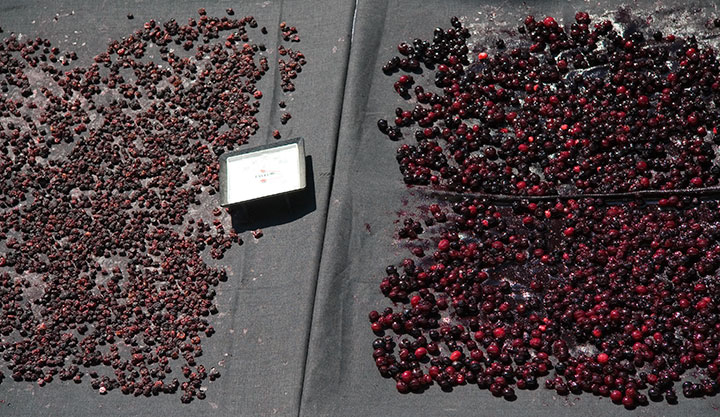
Here you can see the difference between fresh, split berries and ones that are almost done. Once they’re dry, pasteurize them for fifteen minutes in a 175° oven to kill any residual germs, and store in a sealed, air-tight jar.
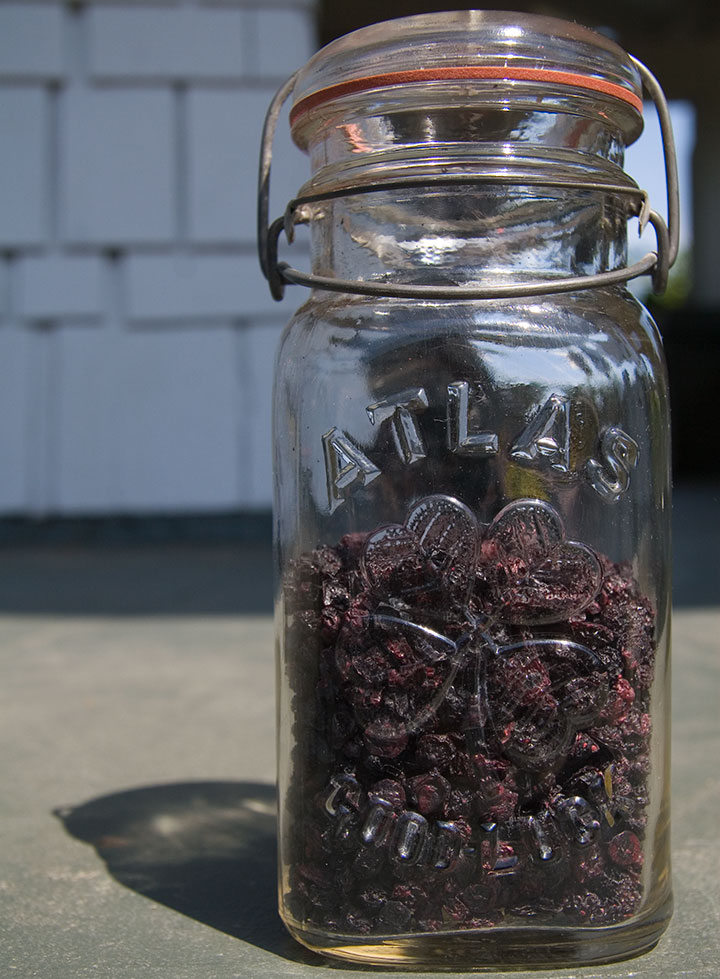
Since we’ll probably use our dried berries for a wide variety of recipes, we left them unsweetened. That way we can reconstitute them for pancakes, sauces and baked goods this winter without any recipe guesswork. They’re still sweet enough to eat plain, too (trail mix, anyone?), although if you prefer your berries pre-sweetened, you can coat them in simple syrup before drying.
Either way, you’ll end up with sunshine in a jar.
July 22nd, 2009
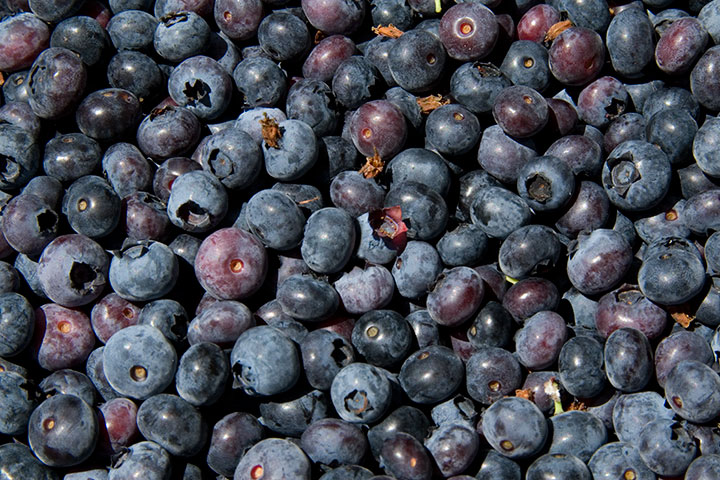
Maybe I’m still not over the shock of moving from Zone Two to Zone Eight, but the sheer variety of fresh produce ’round these parts never ceases to amaze me. Now, if I can barely contain my excitement over what I see at the farmer’s market every week, you can imagine the heart attack I had when the Tailor and I discovered Tacoma’s very own Blueberry Park.
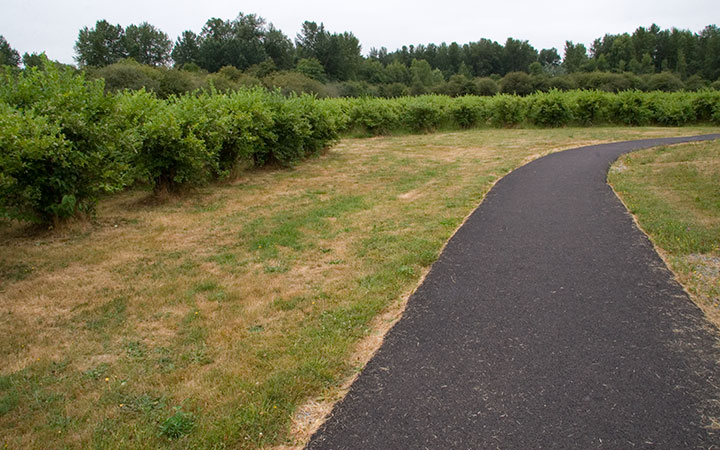
That’s right: a public park. Filled to the brim with blueberry bushes. Four thousand of them. Once upon a time this was a working blueberry farm—after the farm folded or moved on, the land sat vacant and overgrown for years. Eventually Metro Parks took over the land, and decided to free the sixty-year-old bushes from the bracken.
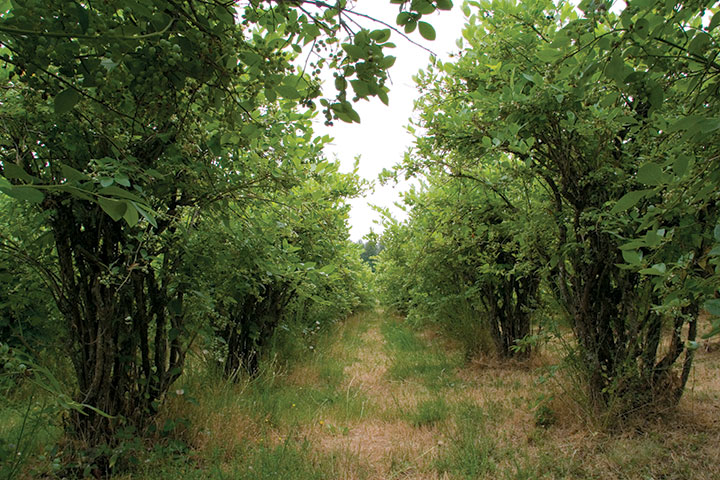
It took years of volunteer labor and many passes by a goat herd to hack back (or eat, depending on one’s preference) the scotch broom and blackberry vines. Now, though, the jungle is mostly kept at bay, and the result is an incredible bounty of pesticide-free berries. The best part? The pickin’ is free. Yes—all the fresh blueberries you, or I, or anyone and their maiden aunt can possibly pick, as many times as we like, for free. And with 4,000 bushes, there’s more than enough to go around. Talk about your tax dollars at work.
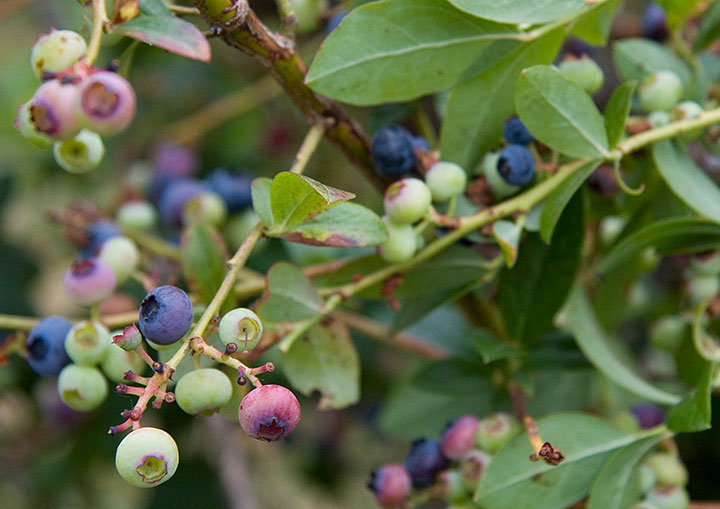
The Tailor and I woke up before the sun today for our third berry-picking session. Our two previous trips to Blueberry Park didn’t yield much, as we were a little early for blueberry season. Today, though, an impressive crop was ready to take home, so with metal pails in hand, we dove right in.
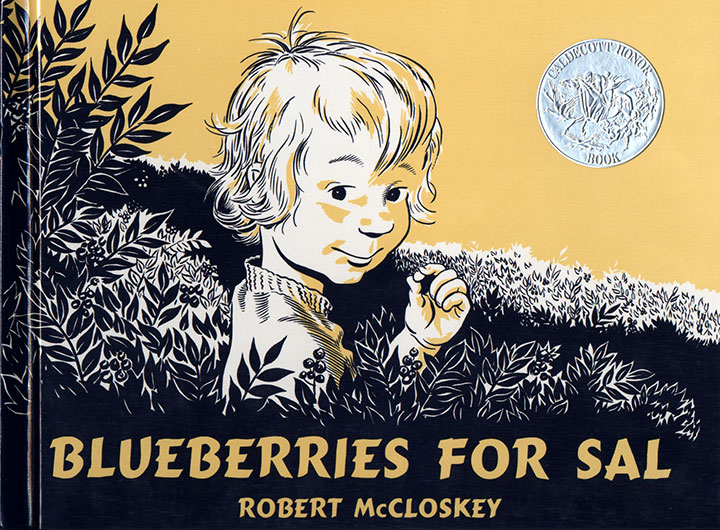
The sound of those first berries hitting the bottom of my pail—kerplink, kerplank, kerplunk—reminded me of one of my favorite children’s books of all time.
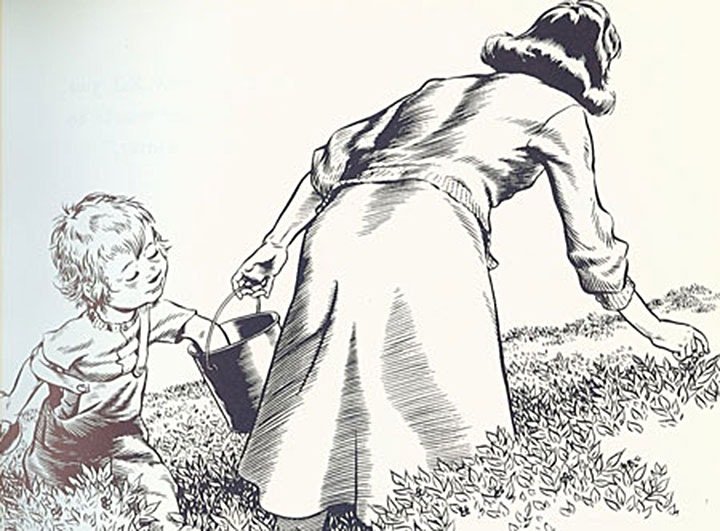
Since we had big plans for these berries, we made sure to arrive with a full stomach.
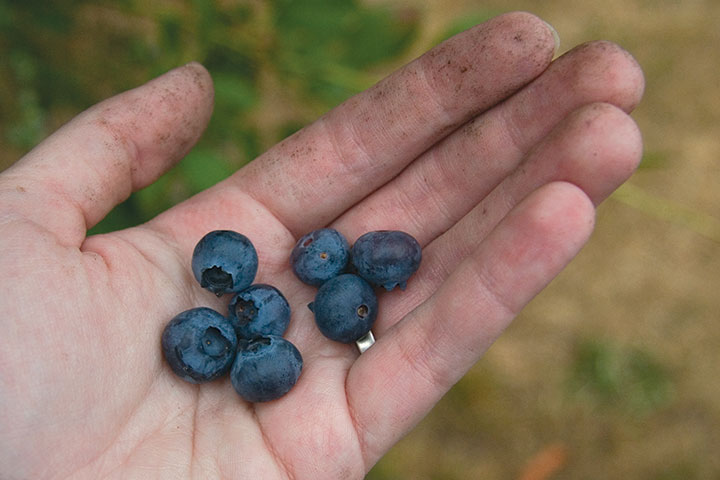
Well, alright, I did eat a few (even with my dirty hands).
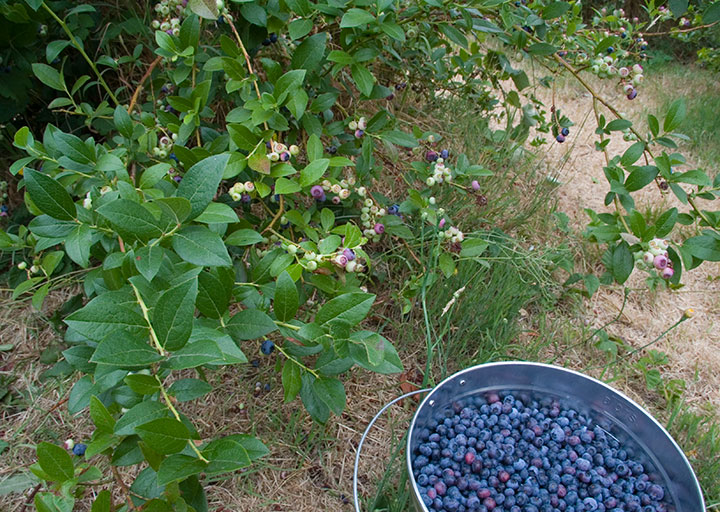
This is the yield of three hours’ work.
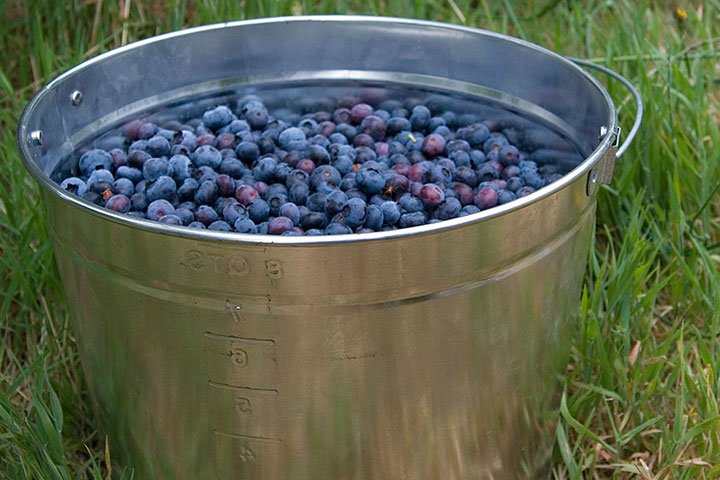
That’s a two-gallon bucket, mind you. We don’t mess around!
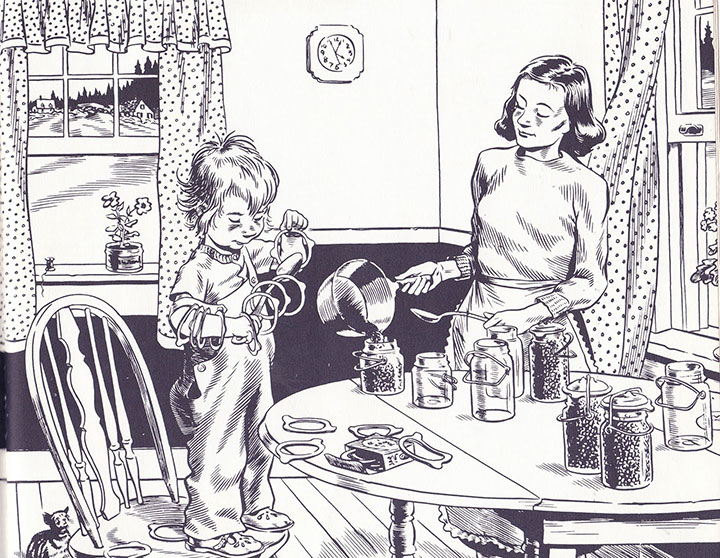
Our ultimate goal? The same as Sal’s mum: winter preserves. After all, if you’re a seasonal foodie, the only way to indulge a January craving for berries is to pop open one of your home-canned mason jars.
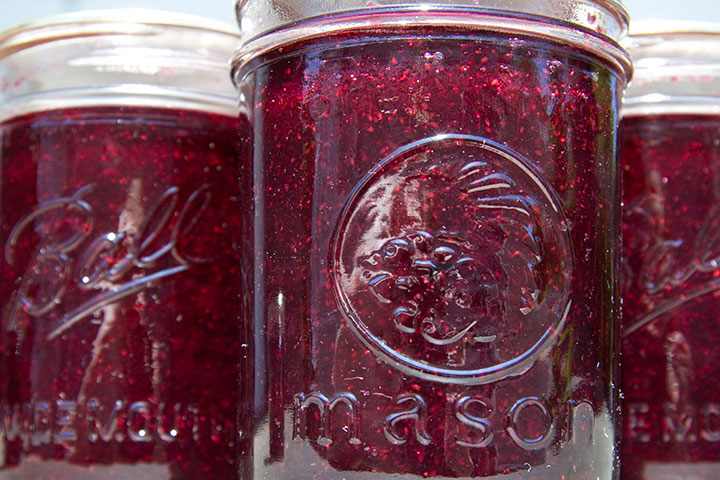
This sparkling jam, yielded by just four quarts of berries, is only the beginning.
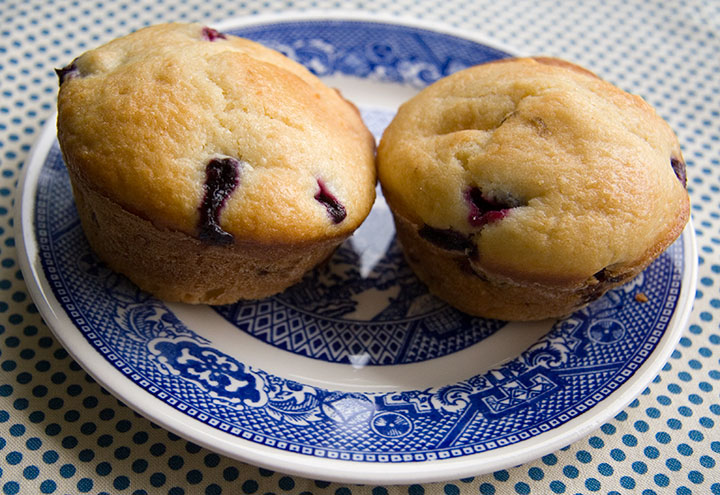
Our house is filled with the scent of baking and the excitement of so many possibilities—pies, pancakes, syrup, glazes, dried berries. What would you do with all the berries you can pick?
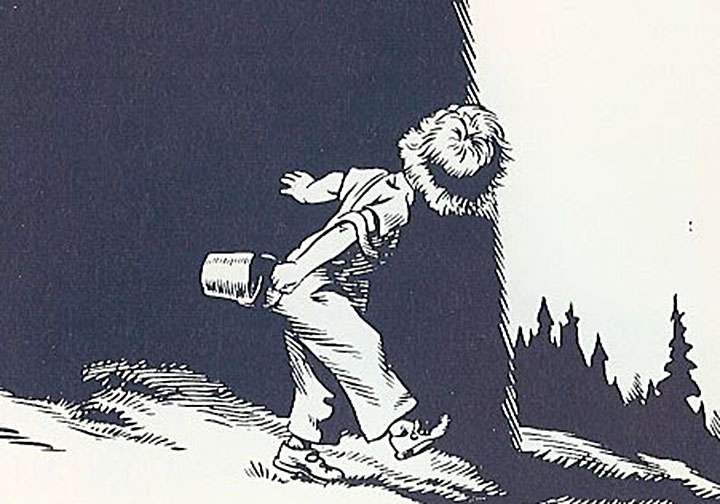
Grab a pail, head to south Tacoma, and find out.
July 6th, 2009
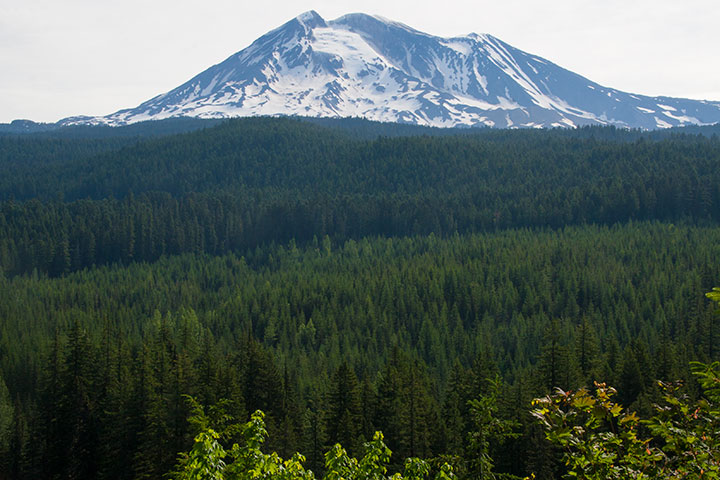
In my (so far) limited experience, Washingtonians tend to be outdoor types—and with good reason. With so much beauty at our fingertips, it’s no wonder that with the first hint of a sunny day, we’re out in force. Add to that the near-clockwork arrival of the dry season by Independence Day, and the fact that huge swaths of the mountains are inaccessible for nine months out of the year—well, you can see where I’m going with this. Since the Fourth of July was kind enough to fall on a Saturday this year, the cities emptied and thousands headed Outward. And this year, though we’re normally Off-Season, Off-the-Beaten-Path types, the Tailor and I were no exception. Like zombies we staggered outdoors to pack our tiny Subaru sedan—must … go … camping!
We knew it was probably folly, but we had a goal in mind: find a beautiful, mountainous campsite away from the teeming hordes. We knew Mount Rainier would be out of the question, as were the Olympic Peninsula, Mount St. Helens, or any other popular tourist destinations—but even though we had a head start by leaving on Thursday afternoon, our hope faded as we saw the crush of fellow vacationers on the freeway. “Camper … camper … RV … canoe … RV … kayaks … cyclists … camper,” the Tailor droned, counting cars, “this was a dumb idea.” Yet as our route took us on smaller and smaller roads, the number of fellow travelers dwindled almost to none. It began to seem like our instincts were right after all.
Our destination? The Morrison Creek Campground, located on the southern slope of Mount Adams, Rainier’s slightly-smaller, lesser-known brother.
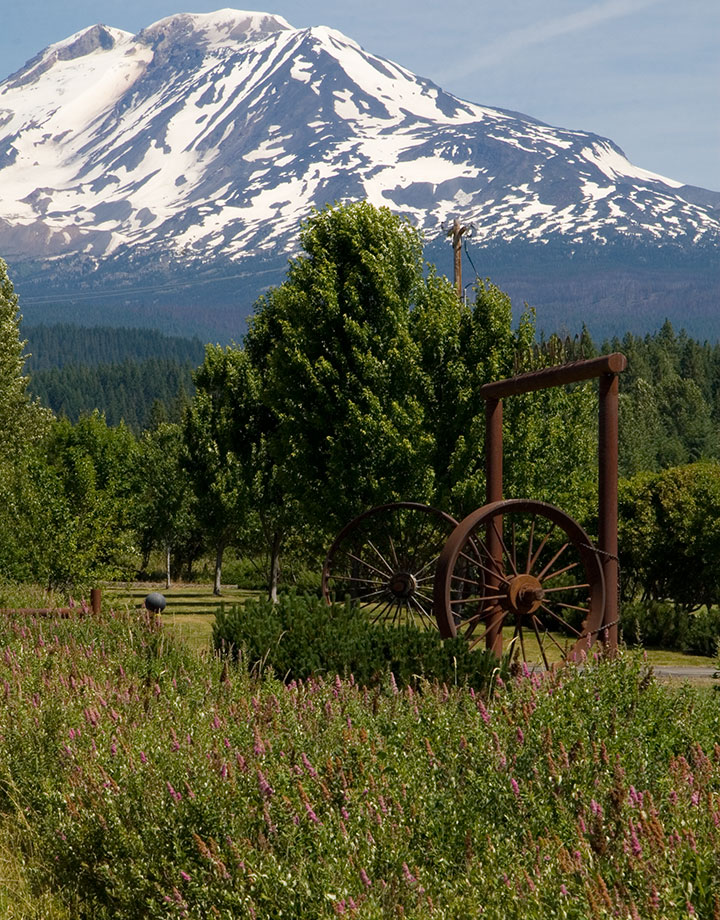
While we were nervous of the possibility of any volcano attracting busloads of holiday tourists, our choice had a couple of points in our favor. For one thing, one can’t reserve a campsite in a national forest; all sites are taken on a first-come, first-served basis. For another, Morrison Creek is in the middle of freakin’ nowhere.
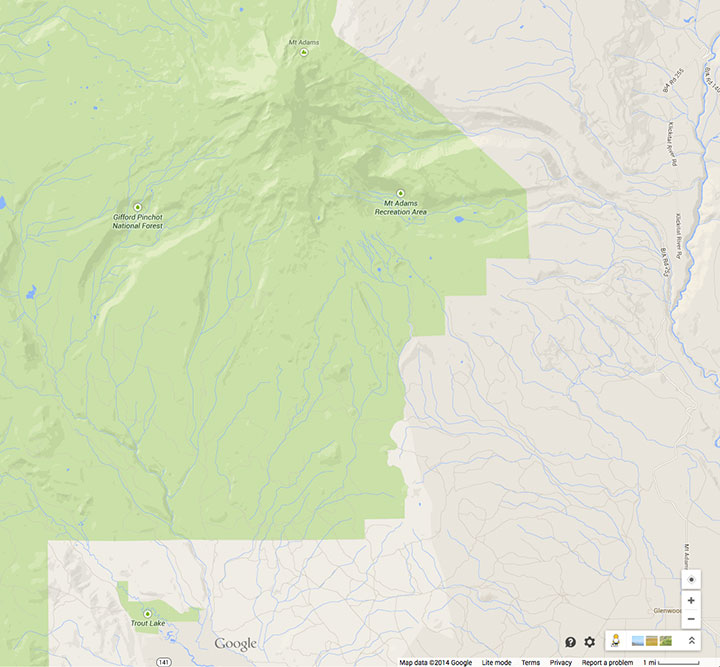
The only way to get there from the north is to use the system of Forest Service roads that wind through the Gifford-Pinchot National Forest. The paved sections are breathtakingly beautiful and super fun to drive (especially with a stick shift; I felt like I was filming a car commercial). The “unimproved” stretches, on the other hand, range from challenging to terrifying. Mindful of the consequences of puncturing an oil pan or snapping an axle on a holiday weekend in one of the most remote pockets of the state, I took my sweet time picking my way around the detritus of recent rock slides and dodging monstrous potholes.
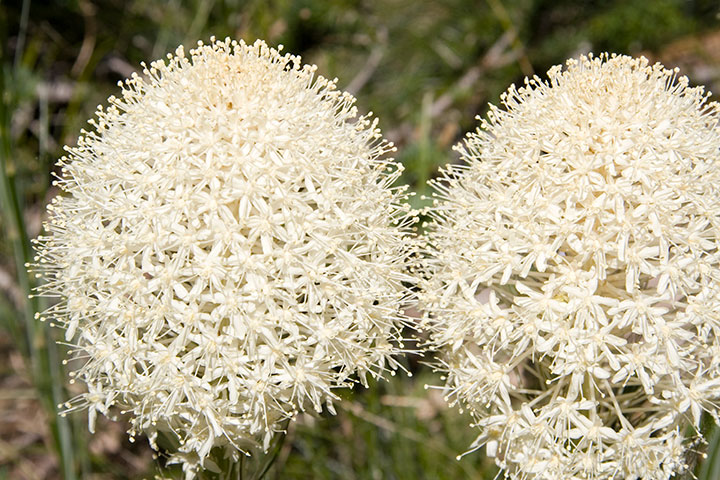
When we pitched our tent just as the last light faded, however, we knew that it was absolutely worth the trip. Our campsite was in a lovely, secluded spot, adjacent to the Creek, just below the last traces of mountain snow, and surrounded by pockets of blooming beargrass. And to our immense surprise, we had Adams almost entirely to ourselves, for the whole weekend—funny, considering that the next campground, three miles up the road, was crawling with mountain climbers.
I was hoping our travels would afford us at least one view of Rainier in the distance—that way I’d have another sketch to add to my store of potential artist book imagery. FS Route 23, however, doesn’t afford such a vista, and any potential viewpoint reached by hiking trail was well out of range of our abilities. A two-mile hike from our tent did give us a spectacular, alpine-meadow view of Adams, though—and I realized that for my research purposes, I could use the peak as a sort of stunt double.
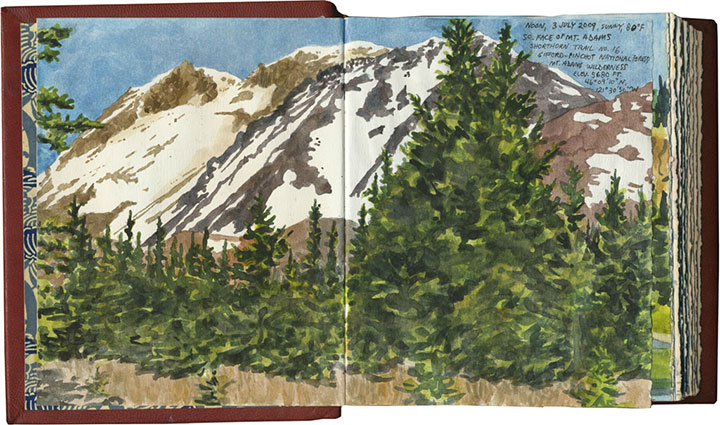
From certain angles, Adams is remarkably similar to Rainier (and people often mistake one for the another when viewed from a distance). All the more reason to use my time there for drawing. I was surprised to see, however, how drastically Adams’ appearance changed, depending on the vantage point. This is the view from Bird Lake, on Yakama Nation land, just a couple of miles (as the crow flies) east of Morrison Creek:
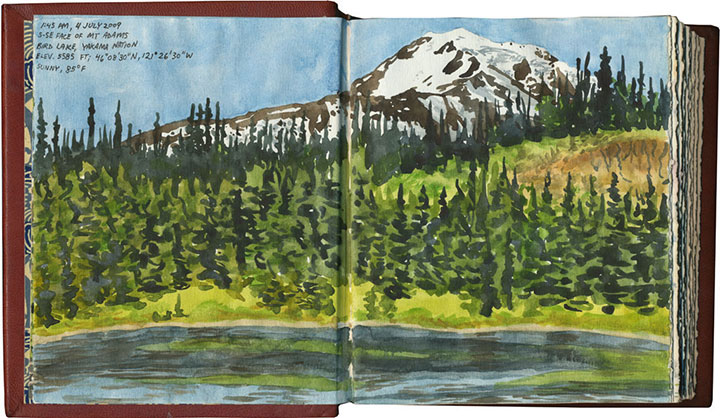
And though there was nowhere to sit to capture it in my sketchbook, a gap in the trees gave me the chance to glimpse another stand-in to the south: Mount Hood.
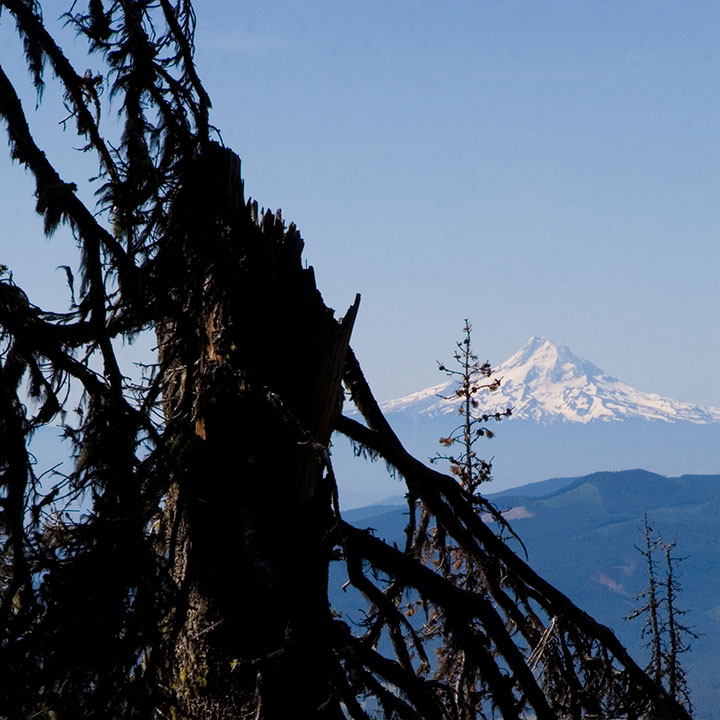
What an incredible weekend. As you can probably guess, Adams is on the short list for Best Camping Spots Ever, and I’m sure we’ll end up returning again and again. Next time, though, it might behoove us to reconsider our mode of transportation; it’s doable in a compact car (just barely), but I think I’d rather rent a pickup truck—or a mountain goat.
May 19th, 2009
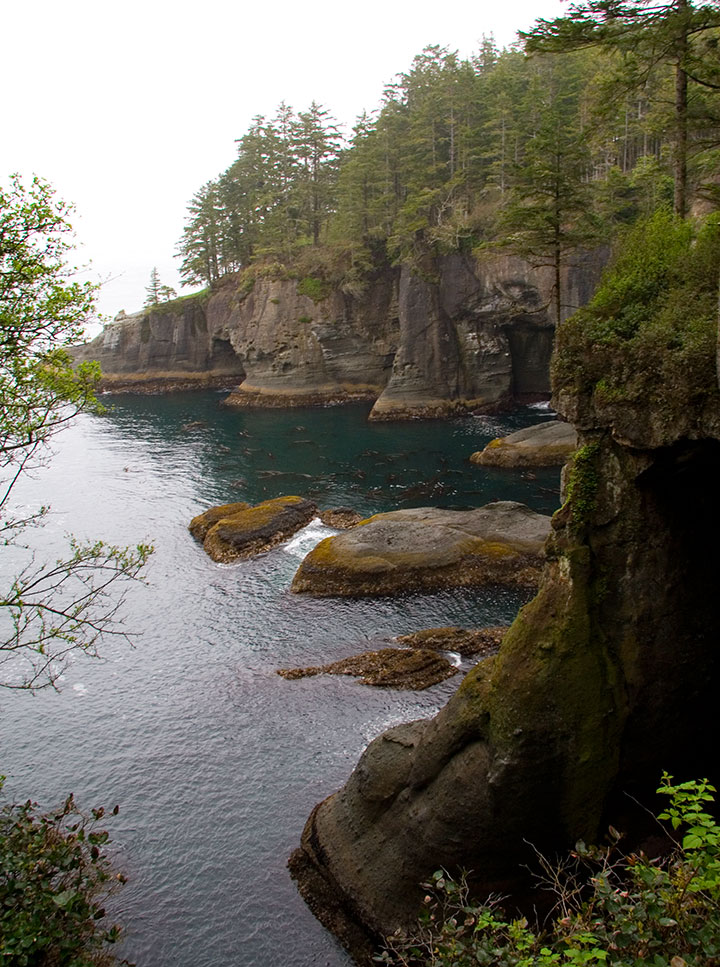
Item number 4,732 from the Bucket List:

Hike to the very tippity-tip of Cape Flattery, the northwesternmost point of the continental United States.
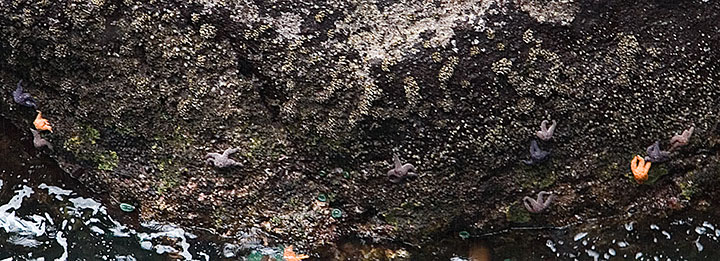
Stand leaning into the wind and rain, back to the trees, discovering how sea stars and cormorants spend their Mondays.

Gaze out to open sea with the spray crashing in your ears, erosion and subduction shaping the world beneath your very feet.
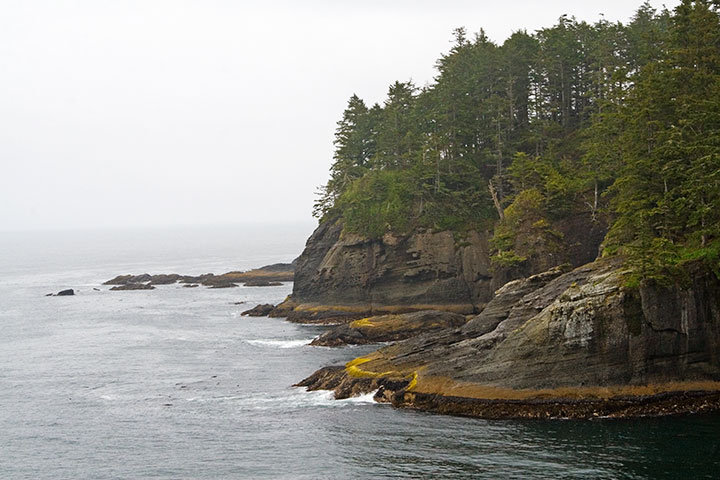
And marvel at all three thousand land-mass miles extending behind you.
Check.
April 18th, 2009
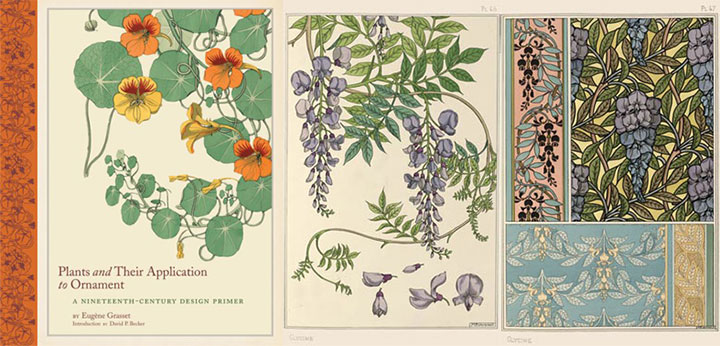
My work tends to deal heavily in flowery typography and ornamental Victorian doodads, so this book has become a constant companion. It’s a reprint of an 1897 design primer, and displays a series of increasingly abstracted renderings of various flora, from realistic illustration to graphic pattern. Most of the patterns in the book aren’t really my cup of tea, but they get the wheels turning and make me think in terms of filtering my sketches and observations into graphic elements. And since I’m in need of some new reference material, both for upcoming letterpress projects and for the new artist book I’m working on (more on that another time), I thought I’d see what spring in the Northwest had to offer. So on Thursday my friend Nicole and I took a little field trip to the Washington Park Arboretum in Seattle and strolled along Azalea Way, cameras in hand.
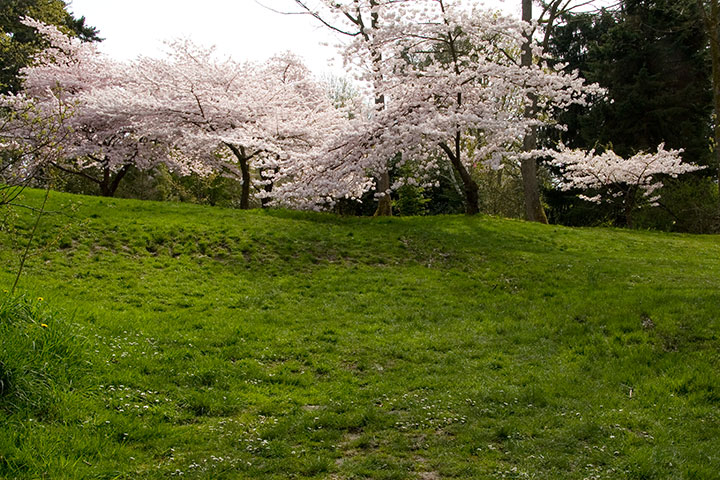
And boy howdy, those cherry trees weren’t kidding.
Everywhere I turn I hear complaints about how pokey spring has been ’round these parts, but I have to say—if this is late, I can’t even imagine what “early” means. It’s been a long, long time since I’ve lived anywhere that had blossoming trees by early April. We had a late spring in Minneapolis last year, the last spring I lived there—which meant that it was Memorial Day before the blooms had anything to say about it (I know, because I was fretting about the bare trees right up until my wedding that weekend). So I’ll take this Northwestern spring, and be very, very glad.

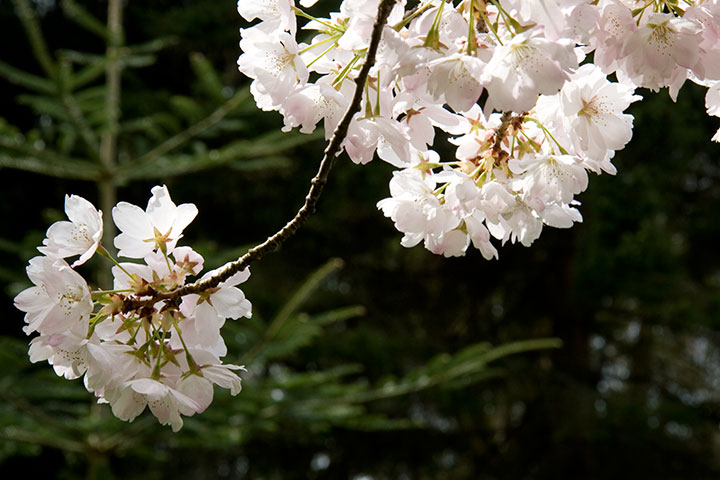
The sun decided to join us, illuminating every perfect bloom in turn.

A few magnolia varieties were ready for their close-up;

while the saucer magnolias thought they’d sit this one out. But those branches! Each tree looked exactly like a candelabra.

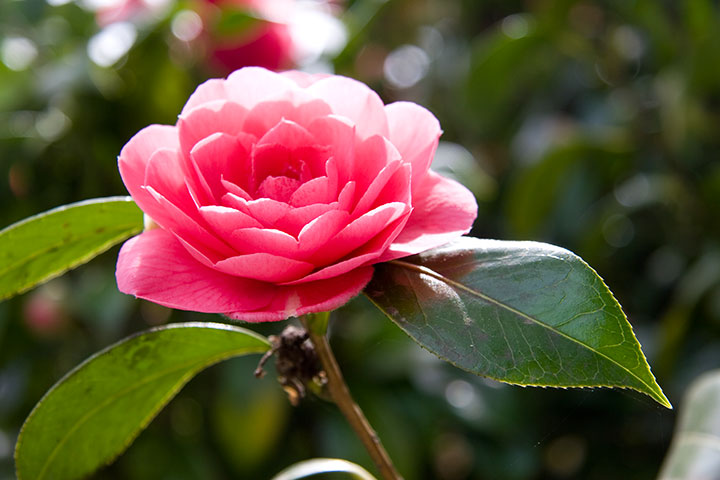
Not to be outdone by the trees, the shrubs and perennials had their say as well.

Even the greenery was super-saturated (no need for Photoshop today!).
I came away with a head full of ideas, and my work cut out for me. Nicole and I weren’t the only artists out that day, either; Azalea Way was just crawling with oil painters, watercolorists and photographers—and other like-minded folk who seemed to have quit their day jobs to do what they love.
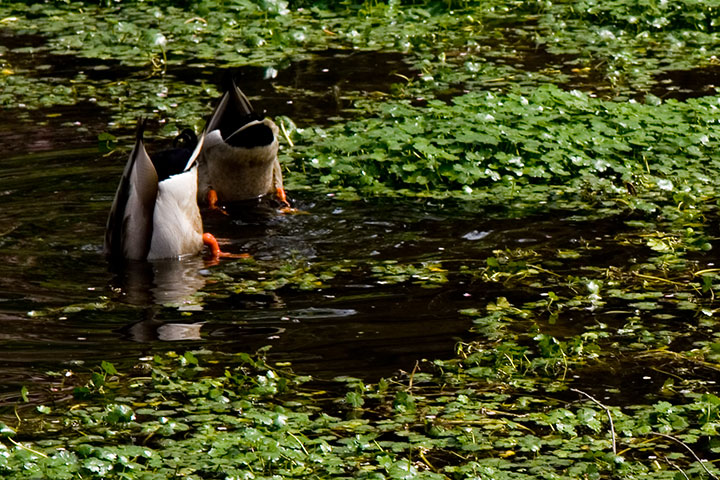
The ducks, however, were working overtime that day.
April 7th, 2009
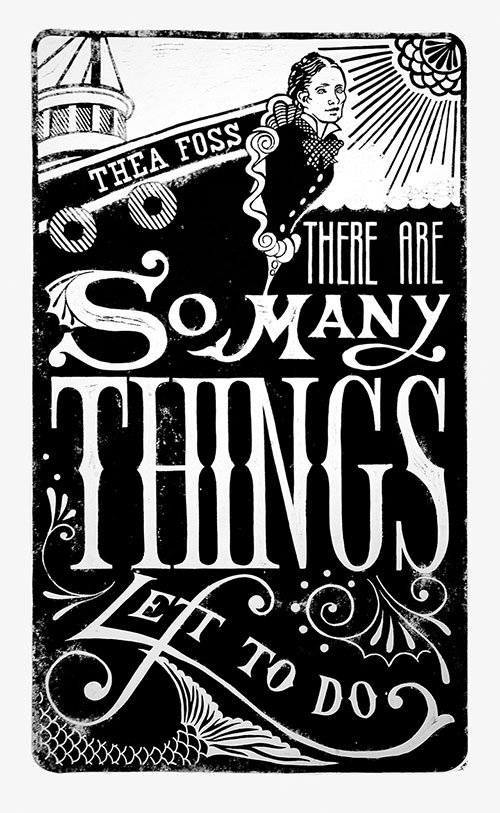
Since my gallery talk on Sunday was limited to a local audience, I thought I’d highlight a few of the pieces in my To the Letter show. (Besides, in a blog post I don’t have to worry about any public-speaking nerves, or hear myself say “Uh” or “um” twenty-nine times a minute.)
The only wall piece in the exhibit is Tugboat Thea, a piece I did with Jessica. The print is an unofficial member of our Dead Feminists series because of its size, and let me tell you, that sucker is huge. (Four feet tall!)
And why is it so enormous? Why, it was printed with a steamroller, of course!
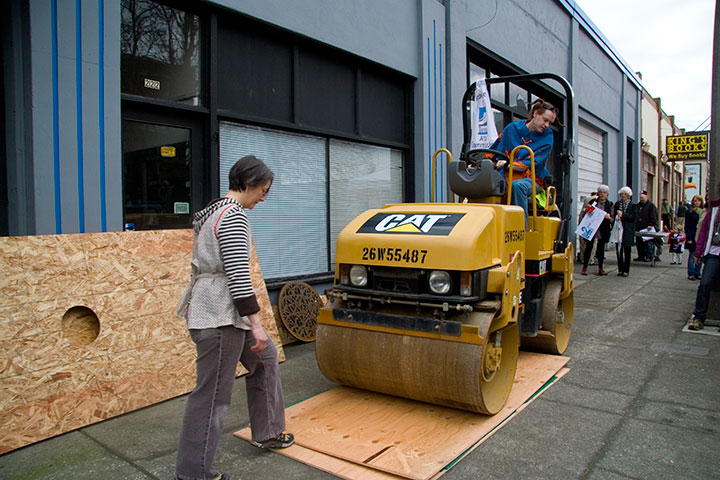
Yes, you read that right. The folks at King’s Books asked us to be a part of their fifth annual Wayzgoose* celebration on the first of March, and steamroller printing was the main event. Thanks to a grant from the Tacoma Arts Commission (seriously, thank you!), each artist or artist-team was given a four-foot slab of linoleum to carve as they saw fit. Jessica and I decided to pay tribute to Tacoma’s own Thea Foss—business pioneer, Waterway namesake, feminist extraordinaire, and inspiration for the Tugboat Annie stories and films.
The trouble was, our Feminist Broadside format relies on a quote by the subject, and we were having an awful time finding anything attributed to Thea herself. Luckily we discovered Finding Thea, the excellent documentary film by Nancy Bourne Haley and Lucy Ostrander—which, by the way, also provided great reference material for sketches.
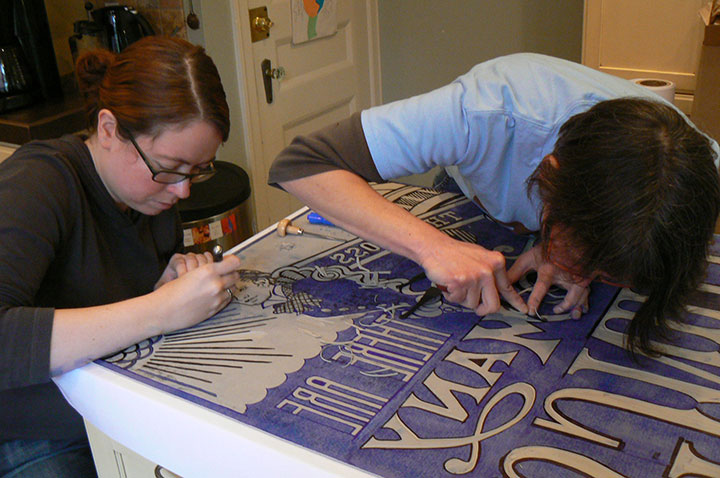
This should give a rough idea of the scale we were working with. To transfer our image onto the linoleum (backwards, so it’ll print correctly), we photocopied my design drawing at 600% size, placed the copy face-down onto the linoleum, sprinkled it with mineral spirits, and ran a hot iron over the wet paper. The heated solvent transferred the copy toner onto the linoleum exactly the way we wanted it. Then we just had to spend a week carving it!
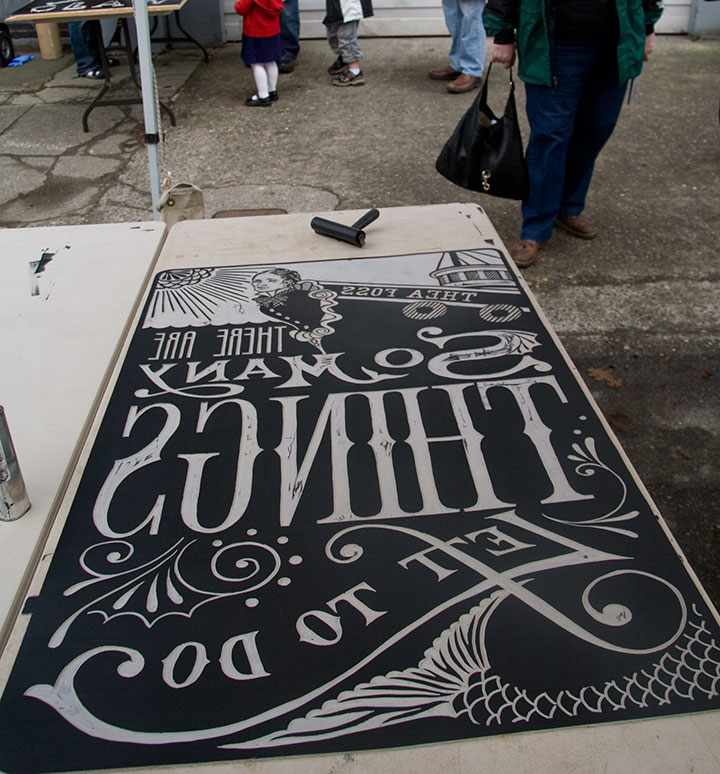
Here’s the finished block, all inked up and ready to print.
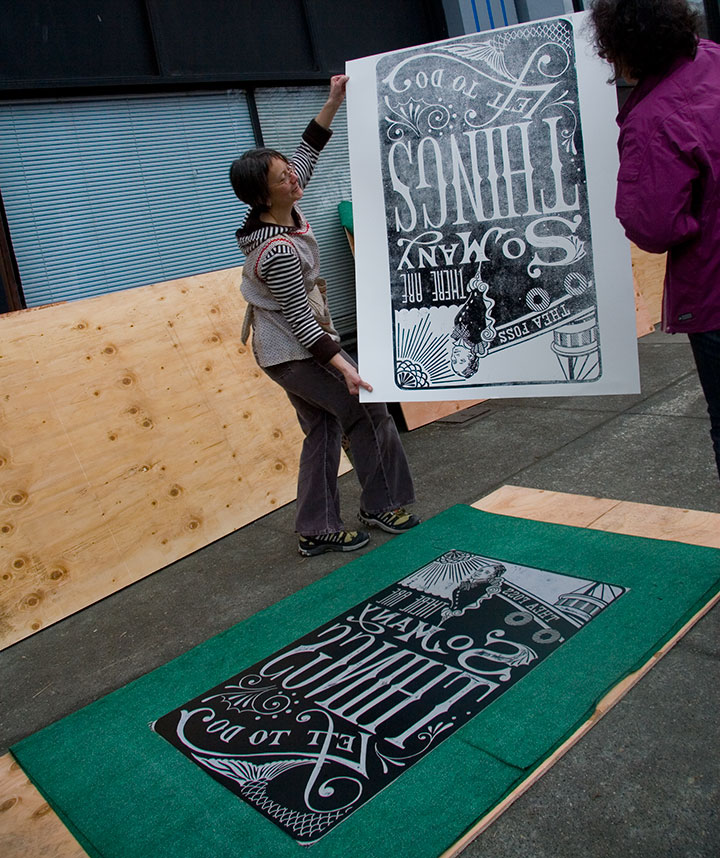
And here’s the print, hot off the press. Nancy, the director of the documentary, even jumped in to help!
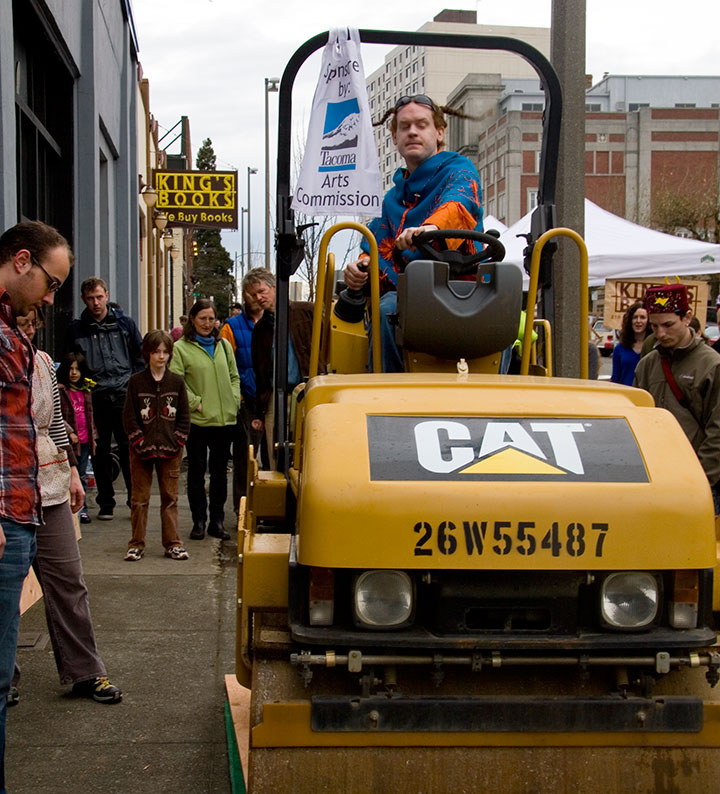
Despite weather that absolutely refused to cooperate and ink turned soupy by the rain, the Wayzgoose was a huge success. We had over 500 people in attendance, and every steamroller artist knocked out at least a few prints.
Since the prints are so unwieldy, and since we can only print a handful of them at an event like Wayzgoose, we’ve decided to retool the design of Tugboat Thea. We’ll print a (smaller!) letterpress edition as the next in the Dead Feminists series. Look for it here soon!
I have to say, though, I’m grateful we were able to find a genuine Thea quote—it was either that or this nugget from the old Tugboat Annie stories:
“O.K., ye ol’ gafoozler,” she replied quietly and stood up.
Alright, I admit it: anything using the word “gafoozler” is going to be a major temptation.
• • • • • • • • • • • • • • • • • • • • • • • • • • • • • • • • • • • • • • • • • • • • • • • • • • • • • • • • • • • •
* Wayzgoose (origin obscure): a celebration given by a master printer to his workmen each year to mark the traditional end of summer and usher in the season of working by candlelight. Generally held as an annual celebration of letterpress and the book arts today.










![Chandler O'Leary [logo]](https://chandleroleary.com/wp-content/themes/chandleroleary/images/logo.png)








































